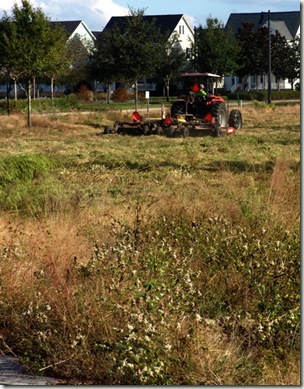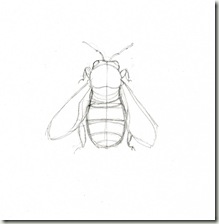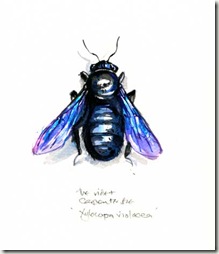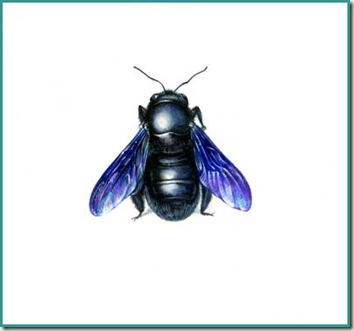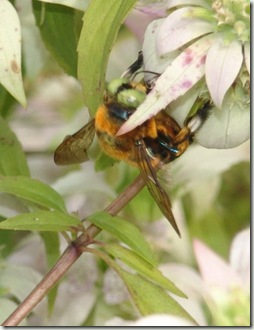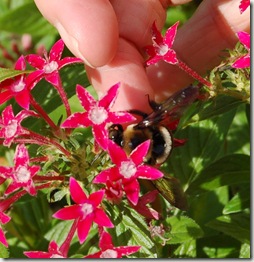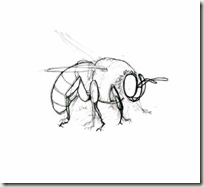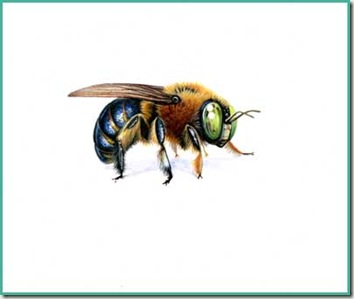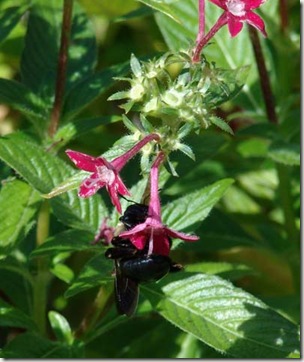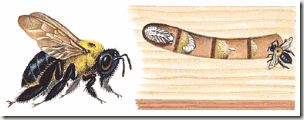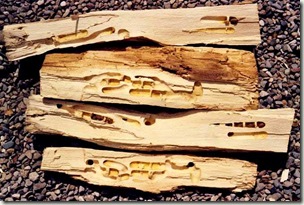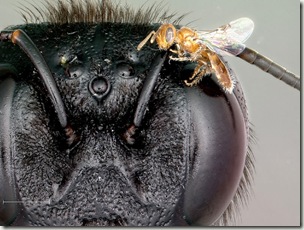This is the companion to Bee 6: the Southern Carpenter Bee, Xylocopa micans.
The Violet Carpenter Bee is one of the biggest bees in Europe and has beautiful blue/violet coloured wings and a big shiny black body. It just had to be included in the set.
The facts: CLASS: Insecta
ORDER: Hymenoptera, Bees, wasps, ants and sawflies.
SUPERFAMILY: Apoidea. Bees and some wasps.
FAMILY: Apidae. Bees.
GENUS: Xylocopa. Large Carpenter Bees
SPECIES: Xylocopa violacea
This bee is common to the Mediterranean and Central Europe and now has been spotted occasionally overwintering in the UK. It has the same bad wood chewing habits as the other Carpenter Bees.
There is another species of furry tan Carpenter Bee the Xylocopa varipucta which is on my list to paint and has been described as like a small flying teddy bear and I may get round to it later. .. so many bees so little time!
Bad news for Bees of Baldwin Park
Yesterday, the tidiness police came round to Lake Baldwin and decreed the chopping down of untidy weeds.
We are allowed an environmentally protected zone as long as it is neat.
A mowing man arrived and the whole of the lovely messy tangle of flowers, grasses and reeds has been razed to stalks and stubble. We had this….
Now this, even this last clump of horsemint in the foreground was gone by lunchtime.
Gone are the Spotted Horsements, the Indian Blanket, the wild Blue and Golden Asters, the Yellow Tickseed, the grassy Bottle Brush, the Morning Glories, the Dog Fennel, the brilliant Scarlet Tassel Flower, the delicate purple headed Hairawn Muhly, the silvery Bushy Bluestem, the small Rattle Box shrubs, the Lopsided Indiangrass whose beautiful feathery tops glistened in the morning sun, the odd black dots of the Rayless Flowers, and various pretty Red Pea flowers, and that is to name just the few that I can identify … but we are tidy now.
Gone too are the singing frogs, the chirruping crickets, the sand wasps, the paper wasps, the clicking dragonflies, the beetles, the snakes, the lizards and a million bugs and flies and worst of all, my bees.
All is silent, still and a bit sad.
Of course it will all be back in due course but it seems a shame.
But back to the Carpenter Bee and a simple sketch to just get the proportions right.
and a colour sketch
____________________________________________
Bee No 7: The Violet Carpenter Bee, Xylocopa violacea


